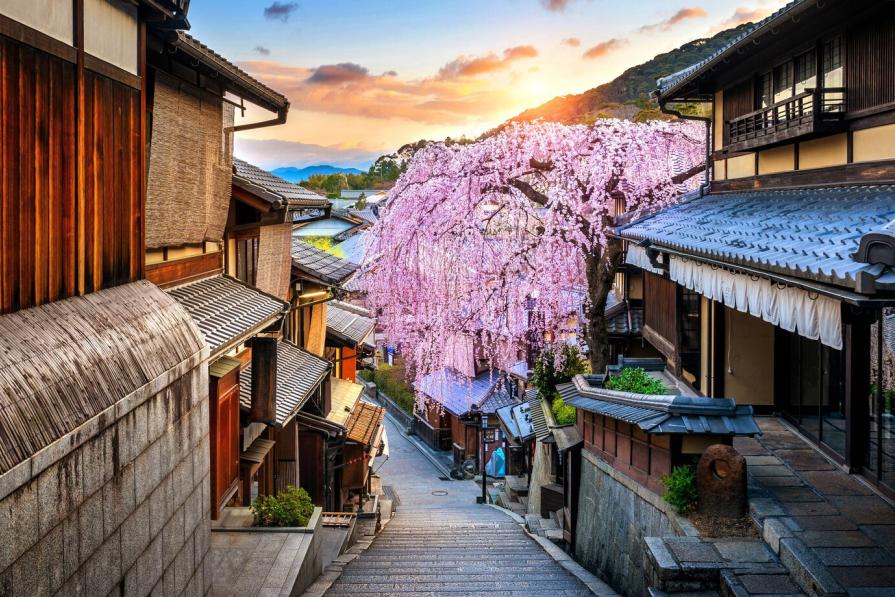Even the most enthusiastic travelers have reasons not to like a particular country. Somewhere to find a reason is simpler, in other cases it will take an excellent effort. Japan is the last case: we present you a selection of nine reasons why tourists dislike this wonderful country. Let us emphasize: we are talking about travelers, permanent residents have other requests and problems.

Visual garbage
The Japanese don't fuss about the appearance of cities and visual hygiene. The streets are disfigured by a large number of signs, announcements on various materials and media, posters and the like. Information about prohibitions is repeatedly duplicated, and route indications are applied literally to every free meter of asphalt and walls. This is unusual for Europeans - here the craving for minimalism, unification and standardization, as well as the position of building owners and the triumph of the corresponding architectural direction made this impossible.

Too many people
The territory of the country is 45 times smaller than the Russian one, with a comparable population. At the same time, urbanization indicators are much larger, and more than half of the population is concentrated in the five largest megacities.
Therefore, as soon as you go to the capital or another major city, please prepare for the world of the winning queues: in cafes and restaurants, at railway stations and metro stations, even on the lifts in the shopping center. The situation becomes especially difficult during peak hours, when a free place in the train car has to wait for half an hour. And this is still the "low season", when due to coronavirus restrictions, the number of foreigners is minimal.

Dearness
In the country, prices are simply shocking, this place is not suitable for modest tourists. For example, in the center of the capital from the nearest air terminal will be delivered for $ 200. A trip in the subway will cost $ 2 for one branch and 4-5 - with transfers (since the lines belong to different companies, transfers may require additional investments). Traveling by high-speed train will cost several hundred dollars.
It's a similar story with products. The famous marbled meat in a restaurant will cost $ 250 from the nose, and in the store prices reach $ 150 per kilogram. Hotels are also very expensive, although the service leaves much to be desired everywhere outside of Tokyo, Kyoto and Osaka.
Tightness
At first, the tiny size of everything in this place amuses, but then they begin to infuriate. By the standards of the Japanese, our typical two-bedroom apartment in Khrushchev is a luxury home. Local hotels accept guests on 15 "squares", although by our and European standards this is unacceptably small for a room of a decent category.
There is also the concept of a "small" double bed. Unsuspecting tourists take this option, and in the room it turns out that they paid for something 90 centimeters wide, which is even less than the usual Soviet "half-and-a-half".
There are also narrow streets, tiny cars and a huge number of establishments for one or two tables. At the same time, among the locals there are very large and fat people (although really rarely).
Design solutions
A separate kind word deserves a local approach to the design of vehicles and other things. It combines perfectionism, which allowed you to create the best technique and conquer nature in everything, from power plants to miniature bonsai plantations, but in everything that concerns design issues, there is direct trouble.
Cars for the domestic market resemble booths on wheels. A little more idea is given by the monsters of the local electronics industry: even ergonomic professional cameras are overloaded with buttons and controls, although the same Apple has long had everything touch, just a couple of touches to activate any function.
In terms of household appliances, they also do not bother: mechanics, buttons and disks rule the ball. And the schemes of the metro and urban public transport are saturated to the limit with information, but devoid of a design component (perhaps for the better).

Bins
The streets of the cities of the country of the rising sun are devoid of urns. For us, who have long been accustomed to the fact that a cigarette butt or wrapper can be thrown on the way into the tank, this seems completely inconvenient.
Locals store garbage in a bag, buy a special sticker in the store and only then send it to the garbage. House containers are protected by special nets: without paying for disposal, it will not be possible to get rid of waste. The only place where you can find a tank is shopping centers for foreigners and sites with machines for various trades.
Approach to time
These people are on the short leg with time and are in a hurry to live. If we count certain things in days and hours, for example, when paying for a parking space, then in Japan we are talking about minutes: five, ten, twenty and so on. To understand how much you will be pulled for a full-fledged turn of the minute hand, you have to multiply and add (tariffs are progressive).
Architectural solutions
Special mention in an unkind way deserves local architectural thought. Cities in Japan – a series of endless concrete boxes. At the same time, work is constantly underway with materials science, proportions and cons, as light sources, but the main thing remains unchanged: the cities are dull, gray and wretched.
The reason is simple and logical. When in the post-war world there was no place for neoclassicism, which had a stable association with totalitarian regimes in the countries of Central and Eastern Europe, it was replaced by modernist architecture, that is, just these solutions made of concrete with minimal finishing. For war-torn Europe, a brutal and economical approach was extremely beneficial. Japan as part of the Western world (do not be surprised – with the Eastern mentality there is a parliamentary democracy and an effective state) was no exception.
For Europeans, this soon passed – in the mid-80s, the soulless and universal style was replaced by new experiments based on greater individualism. But in Japan, everything remained the same: no protests for you, everything is quiet and calm. So, you can work further, continuing the fight against architectural excesses.

Prohibitions and rules
The country has an enchanting number of restrictions and prohibitions. In some drinking establishments it is forbidden to enter shod, smoking is permissible in special rooms. In some parks you can not enter with the great and the dog, in many places roller skates and scooters are prohibited. On top of that, there are women's subway cars and numerous private restrictions.
National rights
It is not easy for foreigners, to rent a car. Or rather, you can take it, but you can't drive. The national driver's license here is invalid, in order to be able to steer, you should get a Japanese one. Thank God, it is issued according to a simplified model - it is enough to pass driving and theory, you do not need to study.










